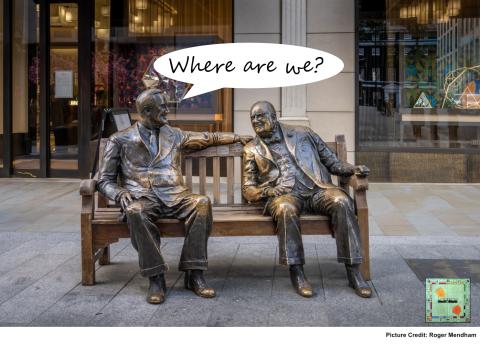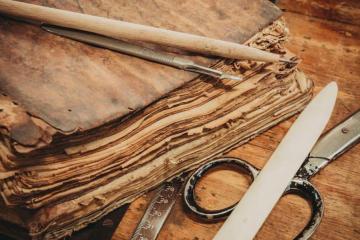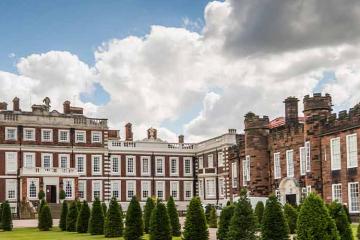Our Heritage Volunteers are working as part of a team working on the rewarding book restoration proj
Lecture 12 November 2025 Monopoly
Lecture 12 November 2025 Monopoly
15 Nov 2025
So we think we know all about the world's most popular and enduring board game Monopoly! But the audience of the Arts Society Horsham was surprised to learn much more in this fascinating exploration into the origin of the game and the hidden connections behind the iconic landmarks.
Lecturer of the month Roger Mendham explained that the original "Landlord's Game" was conceived by American Lizzie Magie in 1903. From the start it was designed as a London game, the landlord being an absentee figure called "Lord Blue Blood, London, England" who "owned" 22 properties, 4 railroad stations, public parking, a jail, as well as light and water franchises. A second more elaborate version was developed in 1924 with Lord Blue Blood still being the landlord, but the game was never published commercially and Magie's invention never fully acknowledged.
It took an opportunistic unemployed salesman, Charles Darrow, who played the game and recognised its commercial value to transform the board game that is familiar to us today. Darrow introduced a colour scheme and tokens and obtained the patent in 1935, claiming to be the inventor of the game! He went on to produce the initial batch of 500 sets which flew off the shelf in Philadelphia and renegotiated with Parker Bros for the US wide launch which established its phenomenal success. The game crossed the Atlantic In 1936 when Waddington bought the UK rights. The managing director Victor Watson travelled to London to select the properties and rail stations whose iconic names are now indelible on the Monopoly board!
We then embarked on a photographic journey of the famous addresses and landmarks, discovering the historical insights and connections behind the grouping of properties which reflect popular culture and commercial enterprises of the time. We learnt that Old Kent Road was featured in a popular song in the 1930s. Bond Street has never existed but a handy collective noun for Old Bond Street and New Bond Street! A tin of Heinz Baked Beans in 1869 cost in today's money £18 from Fortnum & Mason who was the first stockist. Oxford Street now occupies the site of Tyburn Lane and Regent Street is a social divide for the rich in Mayfair and the riff-raff of Soho! As to law enforcement, Bow Street and Vine Street both featured police stations, and Great Marlborough Street had a magistrate court where celebrities of the day - Oscar Wilde, Christine Keeler and Mick Jagger once graced its entrance! Bridwell Palace was turned into a prison in 1556 to house orphans, petty criminals and "wayward" women! Kings Cross, Liverpool Street and Fenchurch Street were served by LNER and all road distances to London lead to the Eleanor Cross at Charing Cross!
After the dazzling grand tour, the tourist mind is quite frazzled with more knowledge it could ingest! However, one had collected a few "not many people know that" gems to impress fellow players the next time we sit round a Monopoly board!
JOIN OUR MAILING LIST
Become an instant expert!
Find out more about the arts by becoming a Supporter of The Arts Society.
For just £20 a year you will receive invitations to exclusive member events and courses, special offers and concessions, our regular newsletter and our beautiful arts magazine, full of news, views, events and artist profiles.






